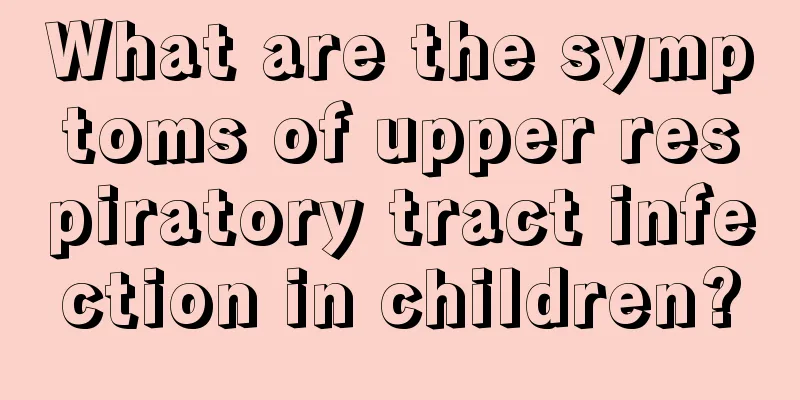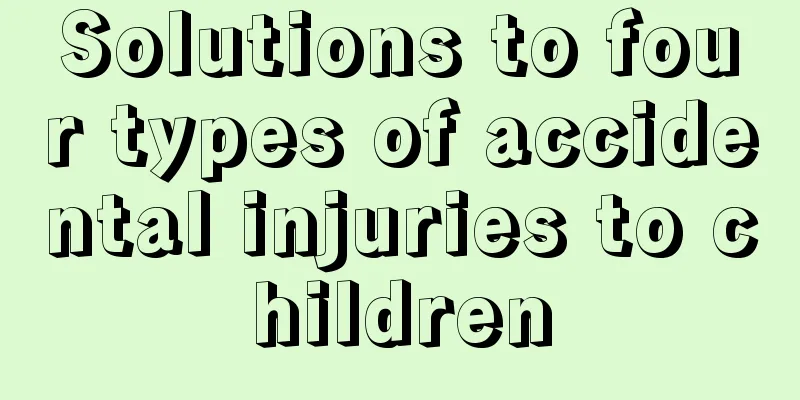What are the symptoms of upper respiratory tract infection in children?

|
Upper respiratory tract infection is caused by bacterial invasion of the nasal cavity and throat. Children, due to their relatively weak immune system, naturally become the main group of people who suffer from the disease. However, some parents have not realized the seriousness of the disease and do not know what kind of reaction will occur. In order to avoid delaying treatment, the editor will focus on the patient's specific symptoms. 1. Common cold, the baby will have cold symptoms. The onset is relatively acute, with symptoms such as dryness, itching or burning sensation in the throat in the early stages. At the same time or several hours after the onset, there may be sneezing, nasal congestion, and clear nasal discharge. It may be accompanied by sore throat, and sometimes hearing loss due to Eustachian tube inflammation. It may also cause tearing, dull taste, shortness of breath, hoarseness, and a small amount of coughing. There is generally no fever or systemic symptoms, or only low-grade fever, malaise, mild chills and headache. 2. Viral pharyngitis, laryngitis and bronchitis. Acute viral pharyngitis is characterized by itching and burning sensation in the throat, and the pain is neither persistent nor prominent. Clinical features include hoarseness, difficulty speaking, pain when coughing, and often fever, pharyngitis or cough. Acute viral bronchitis presents with cough, no sputum or mucus-containing sputum, accompanied by fever and fatigue. Other symptoms often include hoarseness and nonpleural substernal pain. 3. Herpetic pharyngitis, characterized by obvious sore throat and fever, with a course of about one week. It usually occurs in summer and is more common in children. 4. Pharyngeal and conjunctival heat, manifested by fever, sore throat, photophobia, tearing, and obvious congestion of the pharynx and conjunctiva. The course of the disease is 4-6 days. It often occurs in the summer and is transmitted during swimming. It is more common in children. 5. Bacterial pharyngitis and tonsillitis have an acute onset with obvious sore throat, chills, and fever, and the body temperature can reach above 39°C. The discomfort reactions described in the article are common, especially in children, so parents must read it carefully and be vigilant. Once similar adverse symptoms are found in their children, they must go to the pediatric clinic for a detailed examination in time so that they can be treated as soon as possible. |
<<: What to do if your child gets angry in kindergarten
>>: What should I do if my baby cries while swimming?
Recommend
Treatment of neonatal hypocalcemia
What are the treatments for neonatal hypocalcemia...
How to regulate the newborn's stomach and intestines
The gastrointestinal development of newborns is n...
What do children know about diet?
Children cannot make random choices in their diet...
What should I do if a boy has a nosebleed?
For boys with bleeding, we must pay attention to ...
Parents must remember the symptoms of white spots in children
Vitiligo in children is a common phenomenon in da...
What is the cause of the heart murmur during the baby's physical examination?
A family often pays the most attention to its chi...
How to deal with high jaundice in babies?
What to do if the baby has high jaundice and how ...
What are the symptoms of a child having a fever and seizures?
Fever can be said to be something that everyone o...
What are the symptoms of cryptorchidism in children?
Cryptorchidism in children is divided into four c...
Can newborns use humidifiers?
In winter, many people like to use humidifiers, e...
Children sweat easily when they just fall asleep.
Sweating is a very normal phenomenon. Normally, s...
What should I do if my child has many lumps on his hands?
If a child has many small blisters on his hands, ...
What are the symptoms of autism in children
If autistic children are not discovered and treat...
What is the height and weight standard for a six-month-old baby?
As newborn babies grow up day by day, don't t...
Baby allergic symptoms of eating dragon fruit
Dragon fruit is a fruit with relatively high nutr...









